When the temperature drops close to or below freezing, homeowners begin to worry since pipes can freeze and burst if the temperature in your home dips too low. But at what temperature do these pipes freeze? Here's what we found out!
Information varies on how cold pipes must get to freeze. However, the freezing temperature of water is 32° Fahrenheit. Although water freezes at 32° Fahrenheit, your pipes usually need to be at least 20° to freeze.
Before the cold sets in, make sure your pipes are secured! Read on to find out more about protecting your pipes to save time and money.
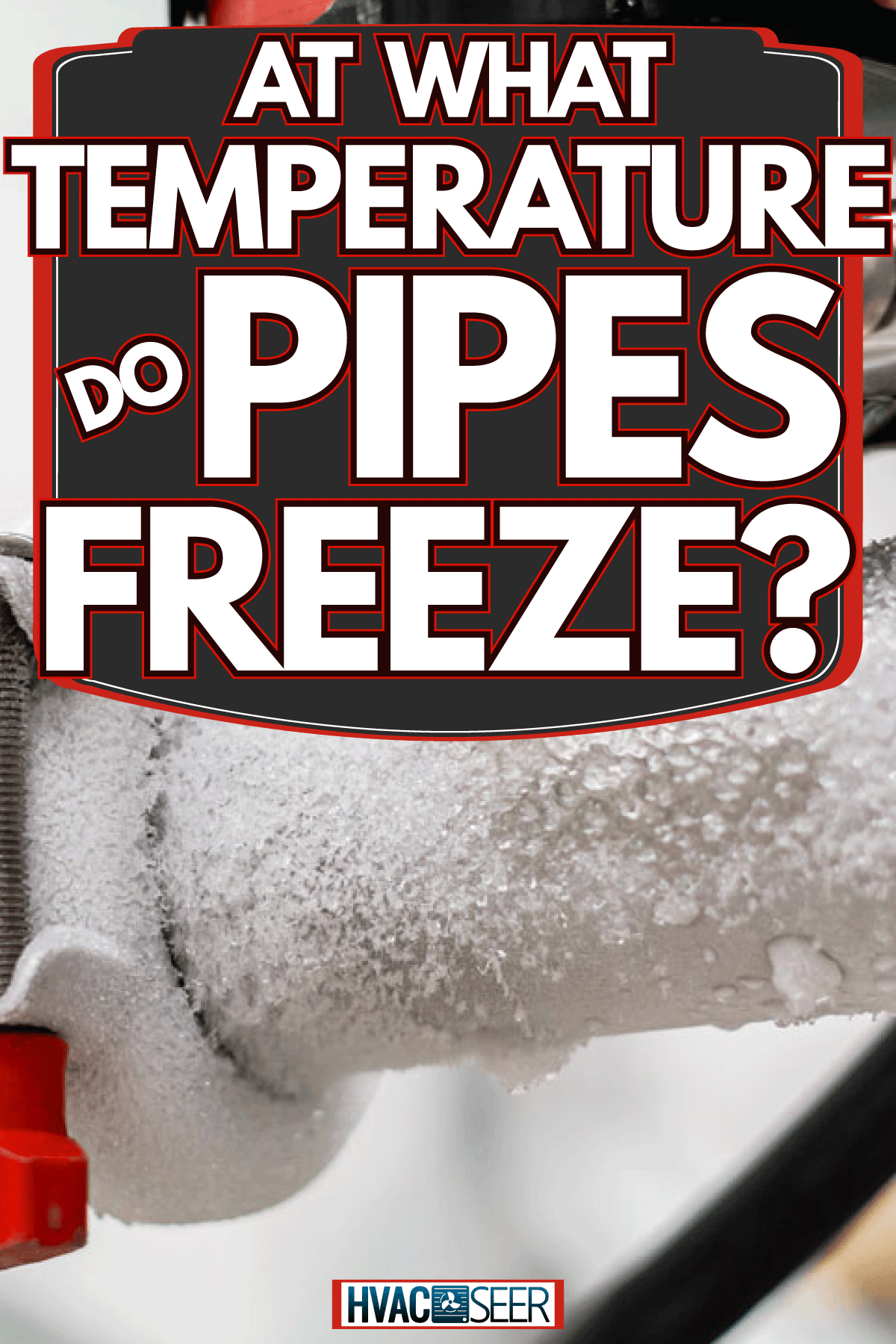
Preventing Pipes from Freezing
Outdoor pipes, such as those connected to sprinklers, pools, and spigots around your home, are likely to be the most sensitive to freezing. Also, pipes in your garage, attic, kitchen, and bathroom can all freeze if it gets too cold.
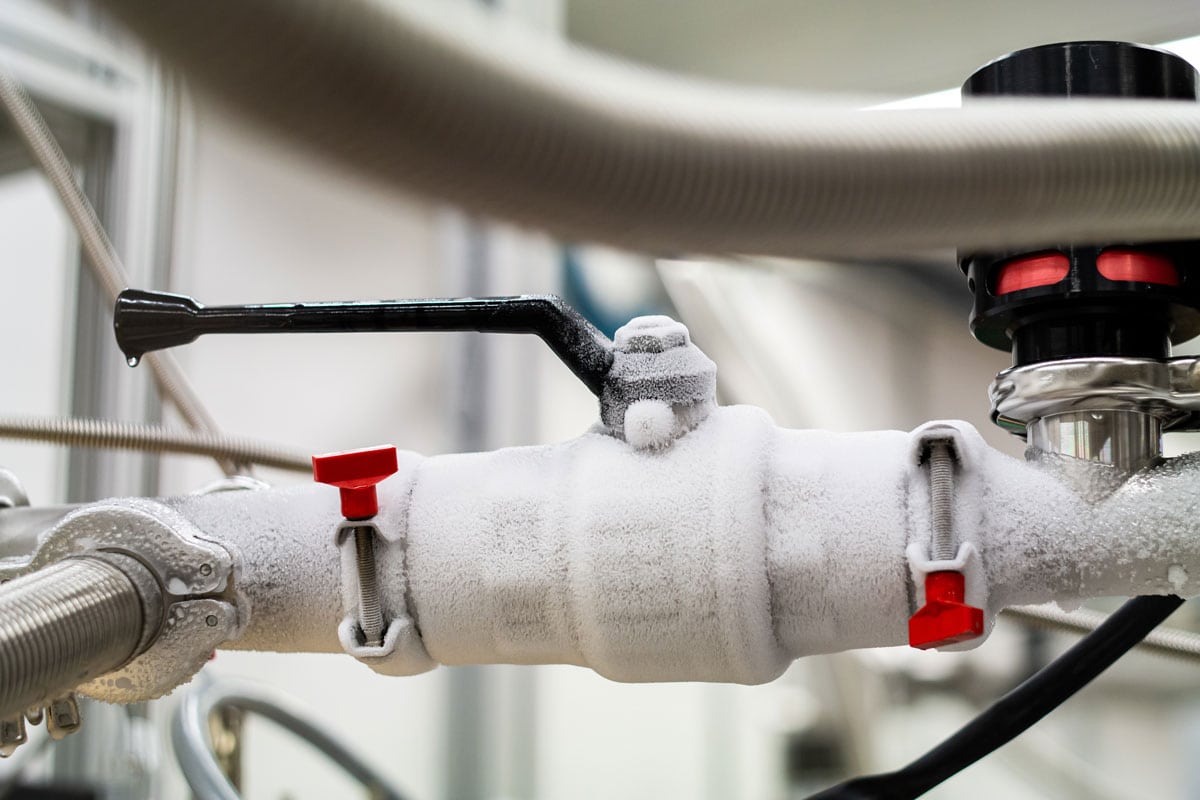
Fortunately, there are things you could do to avoid this from happening. Below are the safety measures you can take.
Make a Plan Before Going on a Vacation
Even if cold weather isn't anticipated, you should prepare for it if you're going on vacation. Set your thermostat to 64 to 68°F and open your under-sink cabinets before you leave.
You should also enlist the help of a friend, family member, or neighbor to keep an eye on your house. To prevent your pipes from freezing, have them walk around your house at least once a day or even some time at night.
Insulating the Pipes
Wrapping your pipes in foam sheath insulation is the best way to keep them from freezing. Any exposed water pipes should be covered, especially those in garages, basements, and along exterior walls.
See this foam insulation on Amazon.
If you can't see your pipes, whole-house insulation may be required. This will not only keep the chilly air out during the winter, but it will also keep your home cooler during the summer.
Turn off Spigots and Sprinklers
Turn off water faucets or spigots outside of your house and let them drain. Also, you must check your basement or utility room for a shut-off valve on most spigots.
Turn on the faucet to empty the pipe once the water has been turned off. Install a foam insulation cover over the faucet for further protection and to keep cold air out.
Click here to see this faucet cover on Amazon.
If you have an in-ground sprinkler system, you should follow the same procedure as above. Turn off the water and then turn on the sprinklers until the water stops flowing. Remember to turn off the system if it's on a timer.
Under Sink Cabinets Must Be Open
Pipes can also freeze in cabinets beneath sinks, especially if they are on an outside wall. Even in heated areas, cabinet doors will keep cold air in and keep heat out.
Warm air will travel through the cabinet doors, preventing the pipes from freezing. When it's particularly cold outside, you should open cabinets, but it's especially crucial at night when temperatures are at their lowest.
If the temperature outside is below 20° F, you should also utilize a space heater. Keep the heater four to five feet away from the cabinet and direct the airflow inside.
Close the Garage Doors and Keep the Area Warm
Another strategy to avoid frozen pipes is to keep your garage door shut. This is especially critical at night when the temperature is at its lowest. To keep your garage warm, you should also add insulation to the door.
If it's bitterly cold outside, you'll need to heat your garage as well. Propane burners produce hazardous gases that can cause you to suffocate. Electric heaters are safer to use. To keep water pipes from freezing, direct the heater toward such walls.
Leave the Faucets Running
Leaving your faucets running is another technique to keep pipes from freezing. Even a slow stream or drip will keep them warm.
While you can run your faucets at any time, it's best to do so when the temperature outside is below 20° F. Also, hot water pipes can freeze just as easily as cold water lines.
Make sure you open both handles if your faucet has two. Set the center of a single-handle faucet to allow both hot and cold water to flow.
Tips on How to Know if Your Pipes are Frozen
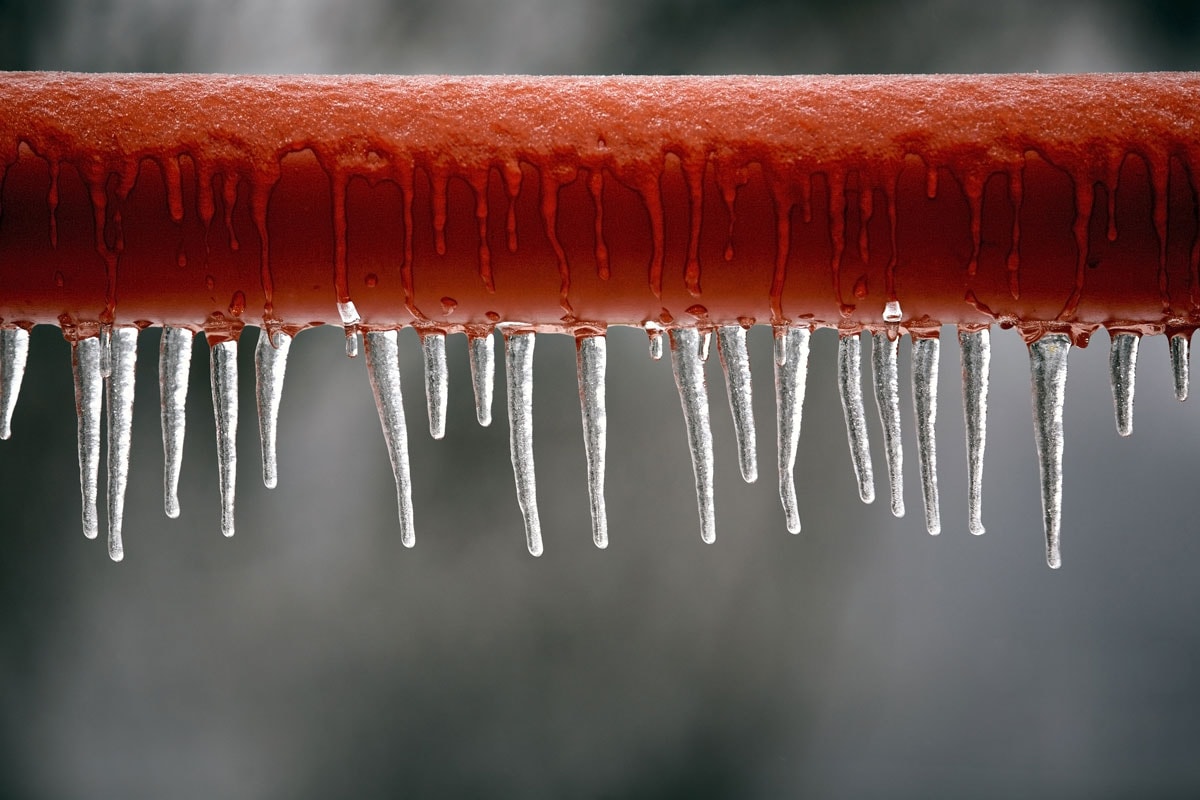
The following are three major signs that your pipes are frozen:
Visible Frost
The most obvious indicator of a frozen pipe, you must act quickly if you observe frost forming on any of your exposed pipes.
Water Flow is Limited or Non-Existent
A lack of running water could indicate a pipe freeze. If you open a faucet and there is little or no water pressure, you should inspect any visible water lines. Keep the faucet open to alleviate any pressure that has built up in the line.
Nasty Smells
When your water system is working properly, drain odors are generally contained in the line. However, strange odors coming from your faucets or drains could be a sign of a frozen pipe somewhere in your system.
Reason Why Pipes Burst
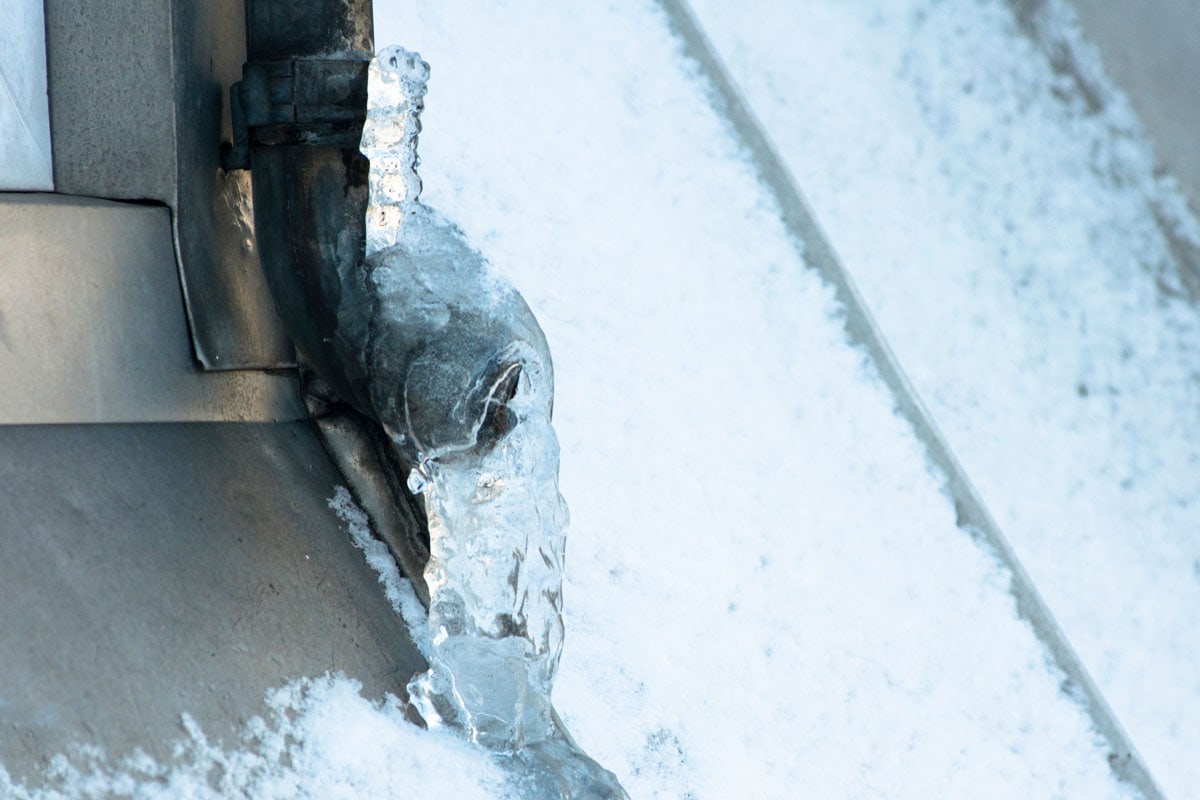
When the temperature around a pipe falls below freezing for an extended time, it freezes. The water inside the line freezes quickly, growing in volume as it does so.
But it's not the ice's physical expansion that causes the pipe to break, it's the pressure created by the increased volume in the line. The pressure inside a waterline might reach 25,000 pounds per square inch in extreme cases.
The pipe will rupture if this continues for too long. When a water pipe bursts, water will start gushing out instantly and will not stop until the line is shut off upstream.
Steps to Unfreeze Frozen Pipes
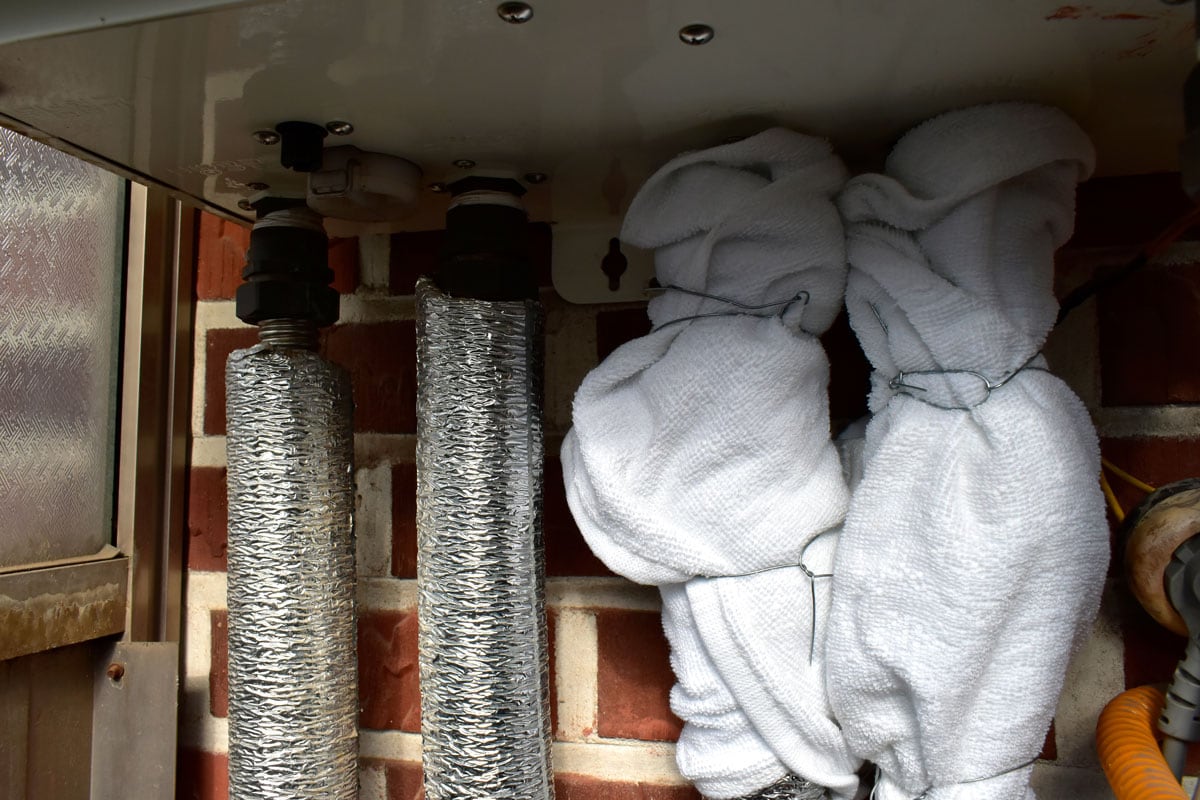
If you suspect that your pipes are about to freeze or have already frozen, you must act promptly to avoid damage to your water lines and water damage to your property.
If you can't find the frozen line, call a plumber right away and ask for emergency assistance to prevent your pipes from bursting.
Below are things you can do to expedite thawing if the frozen pipe is accessible:
- Open the faucet and keep an eye out for water. Any flow of water, even cold water, will aid in the melting of a frozen pipe.
- Heat the pipe directly. To gradually warm a frozen pipe, use a hair dryer or heating pad. To avoid a sudden buildup of pressure inside the line, start at the faucet and work your way down the line, heating slowly.
- Another thing you could try is to heat the room. Placing a space heater or heat lamp in the room with frozen pipes will gradually raise the ambient temperature surrounding the entire line, resulting in a complete and even thawing.
Even if the temperature has increased above freezing, keep applying heat until the full water pressure is restored.
A pipe that has previously frozen is significantly more likely to do so again. Before introducing heat to a water system, always open a faucet.
Heating a closed line can simply worsen the situation and result in a more serious burst.
Keep an eye out for any electronics or other wires in the vicinity of a frozen pipe system. The leaking water from a busted pipe can pose an electrical threat.
In thawing pipes, never use anything that has an open or direct flame. When a pipe is heated too quickly, it causes extra pressure inside the pipe, which can result in even more serious damage.
Moreover, never use anything that has an open or direct flame. When a pipe is heated too quickly, it causes extra pressure inside the pipe, which can result in even more serious damage.
Frequently Asked Questions
Can Pipes Freeze When They are Drained?
It is necessary to drain your pipes before a big freeze to avoid broken water pipes during the winter. Before departing on a winter vacation or if there is a severely cold night in the forecast, drain your pipes.
Draining your pipes now to avoid busted pipes later will save you a lot of time and trouble!
What Is the Minimum Temperature To Keep Pipes From Freezing?
The minimum temperature required to prevent pipes from freezing is 55° Fahrenheit. However, a temperature range of 60° F to 68° F is considered safe.
The air around your pipes will be warm enough to prevent them from freezing. However, you should keep them above 68° if you reside in a warmer climate.
At What Temperature Will Pipes Freeze?
Many factors influence how quickly a pipe freezes. But when the temperature reaches 20°, water supply lines begin to freeze.
The central heating system in most homes is usually sufficient to keep all indoor pipes from freezing. When the power goes out, though, the temperature in the house can quickly fall.
In Closing
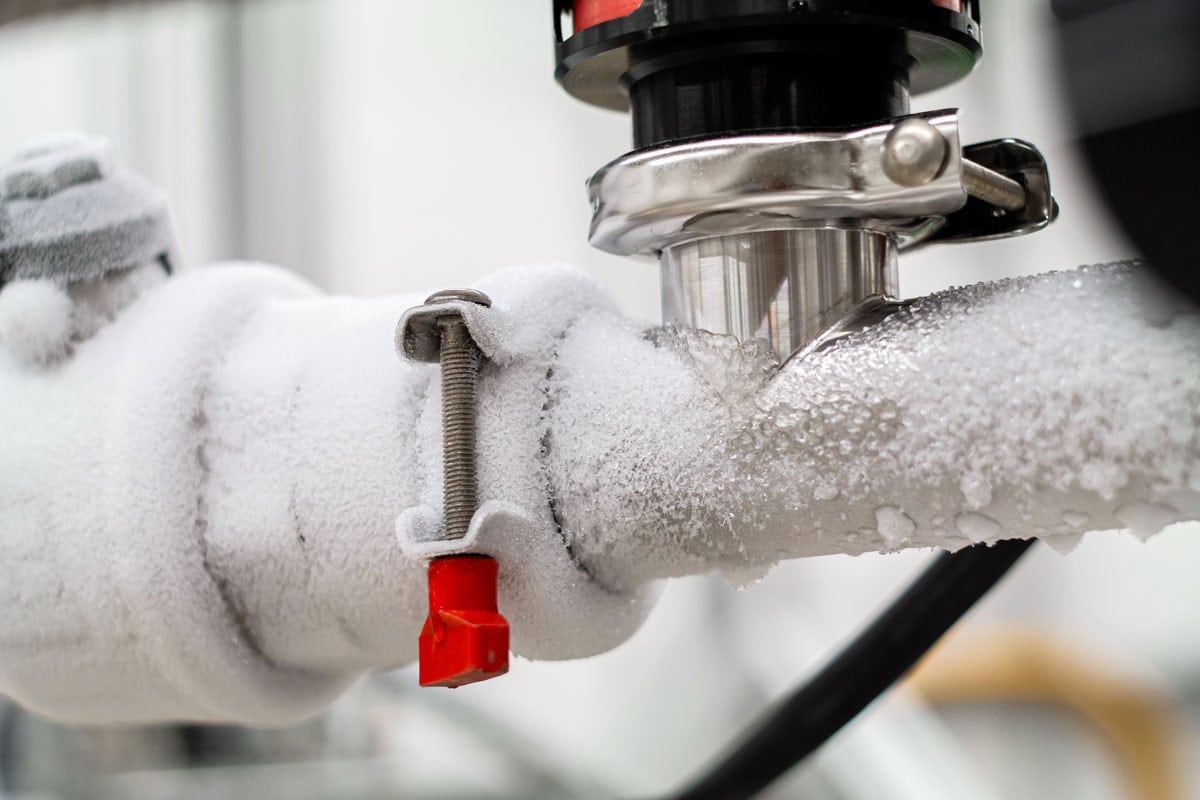
If you're dealing with a burst pipe or water leaks, don't hesitate to call your local plumbing services. A professional and qualified plumber will be able to detect probable pipe bursts and prevent them.
If you enjoyed reading this, below are some other pipe-related articles you can check out!


